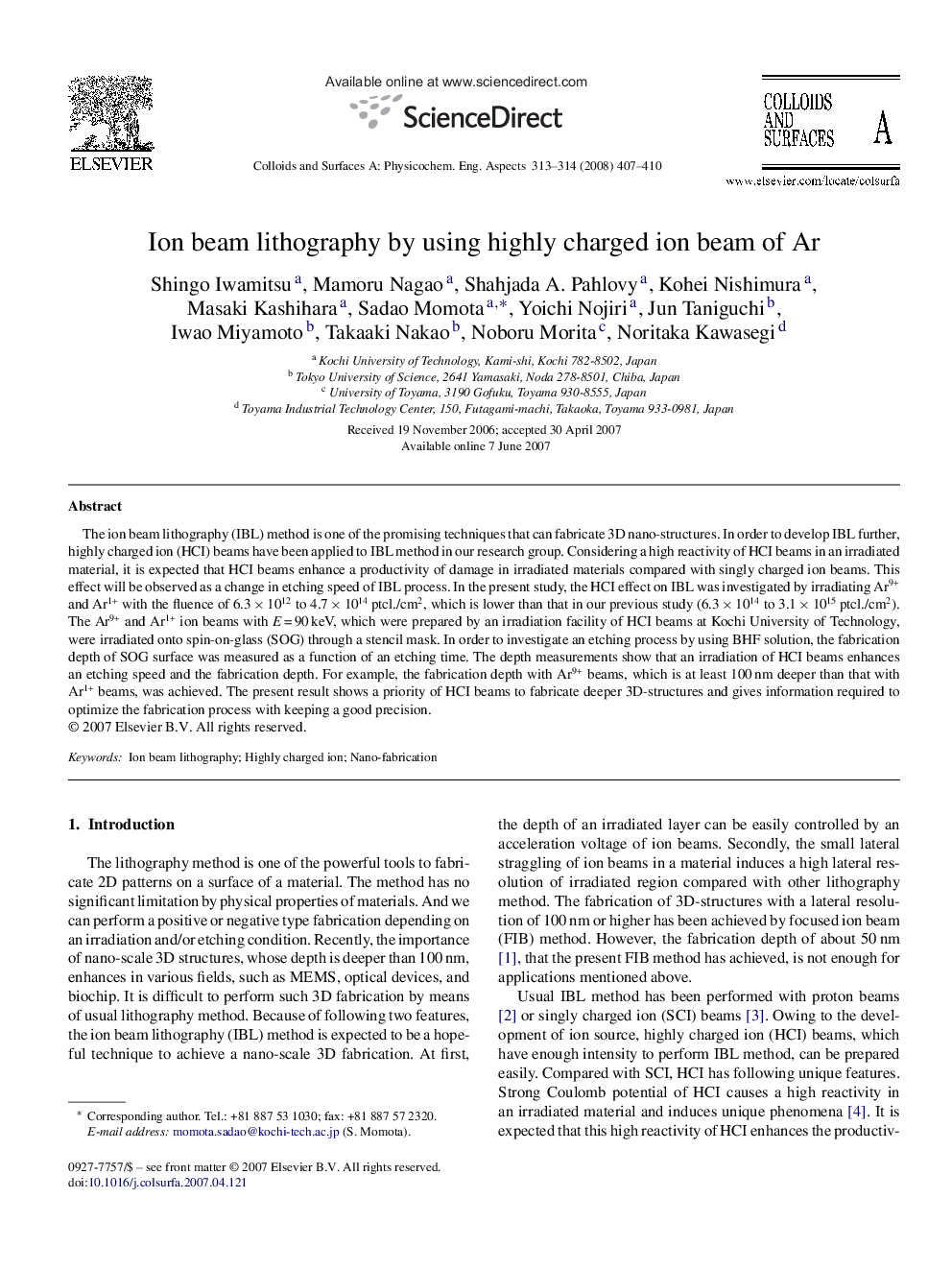| Article ID | Journal | Published Year | Pages | File Type |
|---|---|---|---|---|
| 597009 | Colloids and Surfaces A: Physicochemical and Engineering Aspects | 2008 | 4 Pages |
The ion beam lithography (IBL) method is one of the promising techniques that can fabricate 3D nano-structures. In order to develop IBL further, highly charged ion (HCI) beams have been applied to IBL method in our research group. Considering a high reactivity of HCI beams in an irradiated material, it is expected that HCI beams enhance a productivity of damage in irradiated materials compared with singly charged ion beams. This effect will be observed as a change in etching speed of IBL process. In the present study, the HCI effect on IBL was investigated by irradiating Ar9+ and Ar1+ with the fluence of 6.3 × 1012 to 4.7 × 1014 ptcl./cm2, which is lower than that in our previous study (6.3 × 1014 to 3.1 × 1015 ptcl./cm2). The Ar9+ and Ar1+ ion beams with E = 90 keV, which were prepared by an irradiation facility of HCI beams at Kochi University of Technology, were irradiated onto spin-on-glass (SOG) through a stencil mask. In order to investigate an etching process by using BHF solution, the fabrication depth of SOG surface was measured as a function of an etching time. The depth measurements show that an irradiation of HCI beams enhances an etching speed and the fabrication depth. For example, the fabrication depth with Ar9+ beams, which is at least 100 nm deeper than that with Ar1+ beams, was achieved. The present result shows a priority of HCI beams to fabricate deeper 3D-structures and gives information required to optimize the fabrication process with keeping a good precision.
